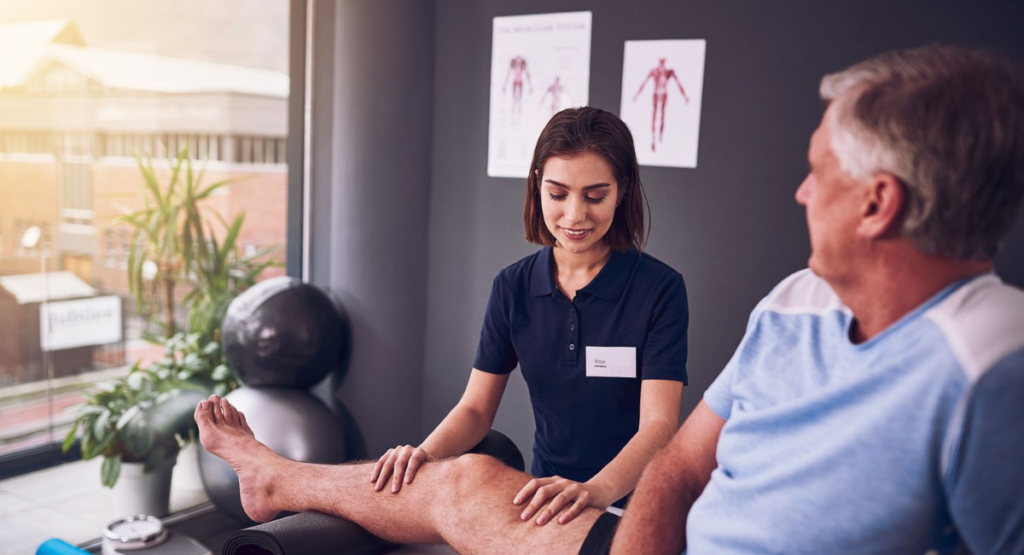Welcome to our in-depth guide on rehabilitation following knee replacement surgery. Whether you’re preparing for surgery or are already on the road to recovery, understanding the importance of rehab and its benefits is crucial for maximizing your outcomes and regaining your quality of life. In this extensive article, we’ll cover everything you need to know about rehab for knee replacement, including its significance, the rehabilitation process, exercises, FAQs, and more.
Understanding Knee Replacement Surgery
Before diving into the specifics of rehabilitation, let’s start by exploring what knee replacement surgery entails. Knee replacement, medically known as knee arthroplasty, is a surgical procedure performed to replace damaged or diseased knee joints with artificial implants. This procedure is typically recommended for individuals suffering from severe arthritis, joint deformities, or injuries that impair knee function and cause persistent pain.
The surgical process involves removing damaged cartilage and bone from the knee joint and replacing it with metal or plastic components, mimicking the natural structure and function of the knee. Knee replacement surgery can be either partial, involving the replacement of only one part of the knee joint, or total, where the entire knee joint is replaced.
The Significance of Rehabilitation
Rehabilitation following knee replacement surgery is a vital component of the recovery process. It begins soon after surgery and continues for several weeks or months, depending on individual progress and the extent of the surgery. The primary goals of rehabilitation are to restore mobility, manage pain, prevent complications, and improve functionality.
Restoring Mobility
One of the primary objectives of rehab is to restore mobility in the affected knee joint. Through a combination of exercises, stretches, and mobility drills, patients can regain strength, flexibility, and range of motion, allowing them to perform daily activities with greater ease and comfort
Managing Pain
Post-operative pain is common following knee replacement surgery, but rehab can help alleviate discomfort and improve pain management. Physical therapy modalities such as heat, cold therapy, ultrasound, and transcutaneous electrical nerve stimulation (TENS) may be utilized to reduce pain and inflammation.
Preventing Complications
Rehabilitation protocols are designed to minimize the risk of complications associated with knee replacement surgery. These may include blood clots, stiffness, infection, and muscle atrophy. Through targeted exercises, proper wound care, and early mobilization, patients can reduce their likelihood of experiencing these complications.
Improving Functionality
By strengthening the muscles surrounding the knee joint and improving balance and coordination, rehab helps patients improve their overall functionality and independence. This is particularly important for activities such as walking, climbing stairs, and getting in and out of chairs or bed.
The Rehabilitation Process
Immediate Post-Operative Phase (Hospitalization)
Rehabilitation typically begins within 24 hours after surgery, while the patient is still hospitalized. During this phase, the focus is on pain management, gentle mobilization exercises, and early ambulation with the assistance of a physical therapist. Patients may also receive education on proper body mechanics, wound care, and the use of assistive devices such as walkers or crutches.
Early Recovery Phase (Weeks 1-6)
As the patient transitions from the hospital to home, the rehabilitation process continues with a combination of supervised therapy sessions and home exercises. The emphasis during this phase is on controlling pain and swelling, improving range of motion, and gradually increasing weight-bearing activities. Patients may continue to use assistive devices as needed and may begin to transition to more advanced exercises and activities as tolerated.
Intermediate Recovery Phase (Weeks 6-12)
By this stage, patients should experience significant improvement in mobility and function. Rehabilitation focuses on further strengthening the muscles around the knee joint, improving balance and proprioception, and progressing to more functional activities. Patients may also begin to participate in activities such as stationary cycling, aquatic therapy, and low-impact aerobic exercises to improve cardiovascular fitness and endurance.
Advanced Recovery Phase (Months 3-6)
In the final phase of rehabilitation, patients continue to build on the progress made in earlier phases and work towards achieving their long-term functional goals. This may include activities such as hiking, swimming, golfing, and participating in recreational sports. The focus is on maintaining strength, flexibility, and endurance while gradually returning to pre-surgery levels of activity and function.
Rehabilitation Exercises and Techniques
While specific rehabilitation protocols may vary depending on individual needs and surgical outcomes, here are some common exercises and techniques that are often included in rehab programs for knee replacement:
Quadriceps Sets: Contracting the quadriceps muscles at the front of the thigh to improve strength and stability around the knee joint.
Straight Leg Raises: Lifting the leg while keeping it straight to strengthen the quadriceps and improve hip flexion.
Heel Slides: Sliding the heel along the floor to improve knee flexion and range of motion.
Hamstring Curls: Flexing the knee while lying face down to strengthen the hamstring muscles at the back of the thigh.
Calf Raises: Rising onto the toes to strengthen the calf muscles and improve ankle stability.
Mini-Squats: Performing partial squats to improve lower extremity strength and functional mobility.
Balance Exercises: Standing on one leg or using a balance board to improve proprioception and stability.
Stationary Cycling: Utilizing a stationary bike to improve cardiovascular fitness, joint mobility, and lower extremity strength.
Conclusion
Rehabilitation is an integral part of the knee replacement journey, playing a vital role in optimizing outcomes and restoring functionality. By actively participating in rehab exercises and following the guidance of healthcare professionals, patients can experience faster recovery, improved mobility, and enhanced quality of life following knee replacement surgery. If you’re considering knee replacement or have recently undergone the procedure, prioritize rehabilitation to maximize the benefits and regain control of your life.
We are India’s first comprehensive continuum care provider. We provide multidisciplinary out of hospital care to acute and post-acute and chronically ill patients at our critical care facilities and your home.


